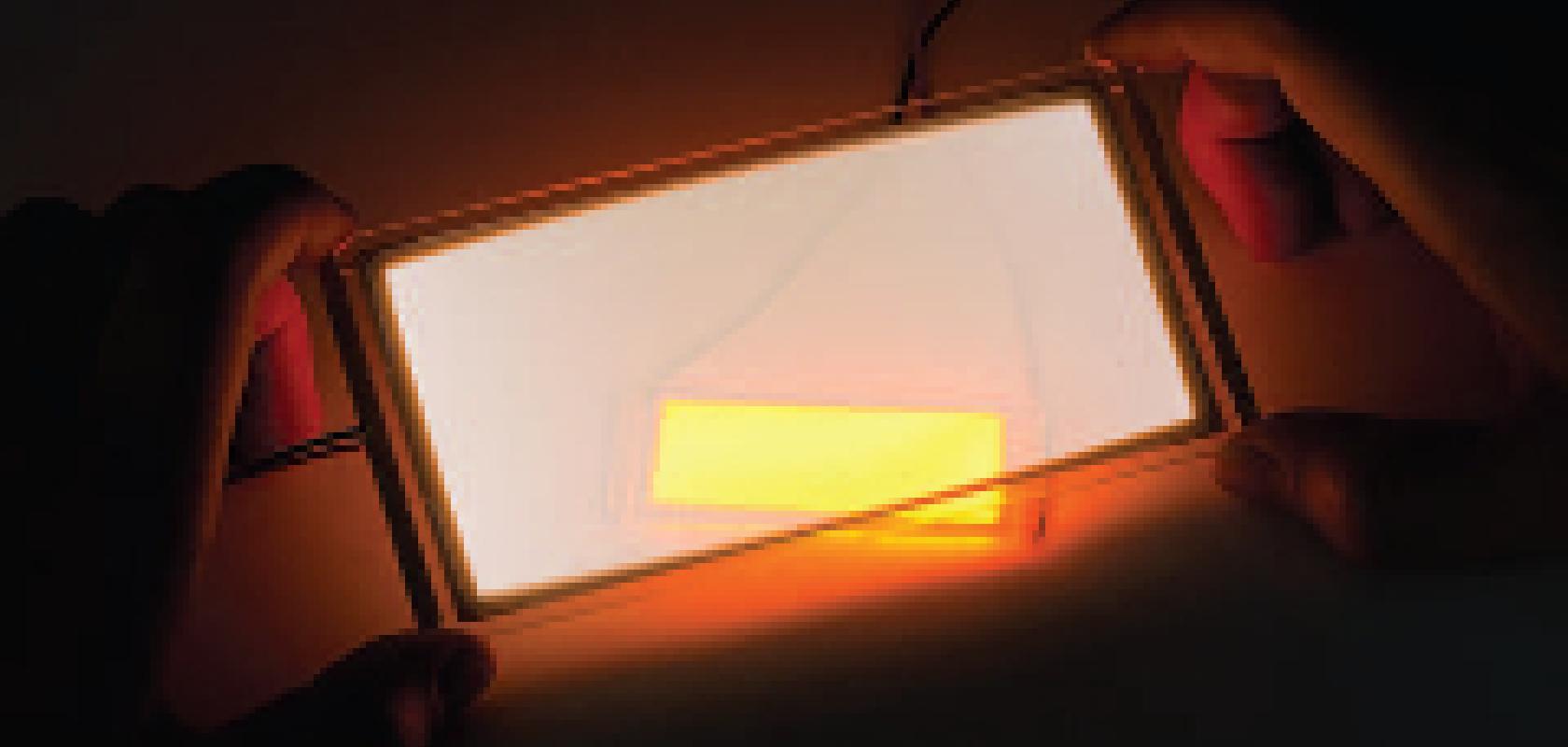Researchers at TU Dresden and Fraunhofer COMEDD have developed a bioreactor to cultivate micro-algae using organic light-emitting diodes (OLEDs) as a light source. The reactors, roughly the size of a cigarette packet, could help find algal strains that excel in producing substances like proteins, dyes, cosmetics, biofuels and pharmaceuticals.
The project was funded by the Saxon State Ministry for Higher Education, Research and the Arts, and the prototype bioreactor will be shown for the first time at the International Display Workshop in Japan, from 4 to 6 December.
Felix Krujatz, a researcher at the Institute of Food Technology and Bioprocess Engineering at TU Dresden, said that, currently, only around 15 of the estimated 60,000 strains of algae have been used in biotechnological processes. He feels there is potential for these small bioreactors to screen different algal strains for varieties that make useful bio-products.
Certain strains of micro-algae produce valuable proteins and oils as a natural product of photosynthesis. In order for the algae to grow, though, they need a light source. The researchers used OLED technology, which can be engineered with an emission peak around the absorption range of chlorophyll (650 to 680nm), explained Krujatz. It is also possible to fabricate OLEDs in almost any shape. The organic LEDs are characterised by their flat design, less than 200nm thick, which means they don’t heat up as much compared to LEDs. This is important for engineering such a bioreactor; LEDs have to incorporate cooling elements, which limits the design of the reactor.
Krujatz said the reactors can be used to understand how the OLED will affect the algae. ‘OLEDs provide homogeneous light because of the 2D light area,’ he said. ‘When illuminating with LEDs, the cells are forced, because of the point light sources, in light/dark cycles. Nobody knows how this affects the cells.’
OLEDs provide a homogeneous light source, so can be used to research how light/dark cycles affect the cells by switching the OLED on and off. OLEDs can be pulsed and dimmed easily – another advantage of the technology compared to LEDs, says Krujatz. LEDs have a high ground voltage, so can’t be dimmed as easily.
Krujatz said the bioreactors can also be used to optimise the bioprocess and investigate parameters such as cell density, how viable the cells are, and how much protein is produced. The cell-specific measurements are made using fluorescent labelling and optical measurement technology. The aim is to get a comprehensive understanding of the process – for instance, to get a better idea of how the algal strains react in terms of biomass growth, chlorophyll fluorescence, and also product formation when the CO2 content is changed.
Krujatz doesn’t see OLED technology in its current state as a lighting technology for large-scale algal production. He said that these processes that are optimised in the lab can eventually be replicated in larger reactors, but using other systems. The small bioreactors are to get a better understanding of the process at a laboratory scale.
The group has completed the design of the reactor and now plans to trial various algal growth reactions.


